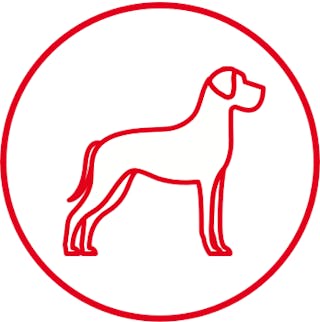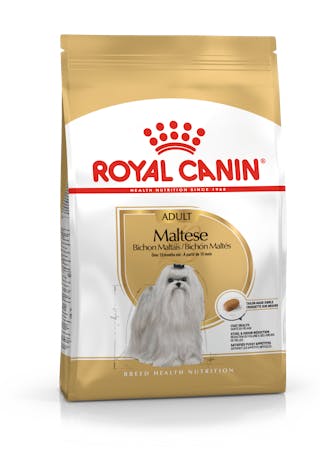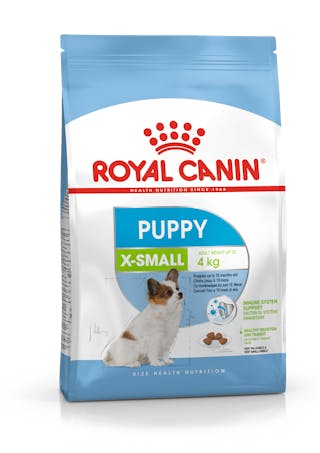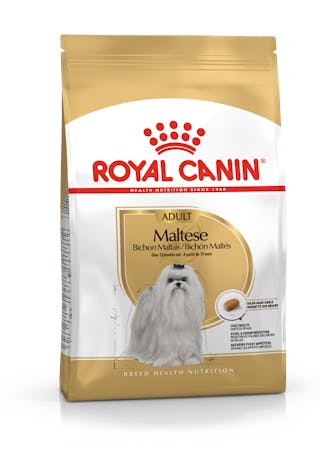
Let's talk Malteses
Notable for their show-stopping coat, small stature and super-cute features, the Maltese is also a friendly, easy-going breed of dog. Renowned as excellent companion animals, they form strong bonds with their owners and make great company. One of the tiniest of the toy breeds, with a top height of just 9in (23cm), this also makes the Maltese the ideal sizeto snuggle up in your lap. No wonder they have been a favourite with everyone from royalty to Hollywood A-listers.
Official name: Maltese
Other names: Melitae Dog, Roman Ladies Dog, Bichon Maltese, Maltese Lion Dog, Maltese Terrier
Origins: Italy

| Drooling tendencies |
|
Warm weather? |  |
| Grooming needs |  |
Cold weather? |  |
| Shedding level |  |
Suited to apartment living? | |
| Barking tendencies | High | Can stay alone?* |  |
| Energy Level (high, low, medium)* | Low | Family pet?* | |
| Compatibility with other pets | |
* We advise against leaving pets alone for long stretches. Companionship can prevent emotional distress and destructive behaviour. Speak to your veterinarian for recommendations.
Every pet is different, even within a breed; this snapshot of this breed specifics should be taken as an indication.
For a happy healthy and well-behaved pet, we recommend educating and socializing your pet as well as covering their basic welfare needs (and their social and behavioral needs).
Pets should never be left unsupervised with a child.
Contact your breeder or veterinarian for further advice.All domestic pets are sociable and prefer company.
However, they can be taught to cope with solitude from an early age. Seek the advice of your veterinarian or trainer to help you do this.


| Baby age | Birth to 2 months |
| Puppy age | 2 to 10 months |
| Adult age | 10 months to 8 years |
| Mature age | 8 to 12 years |
| Senior age | 12 to 22 years |
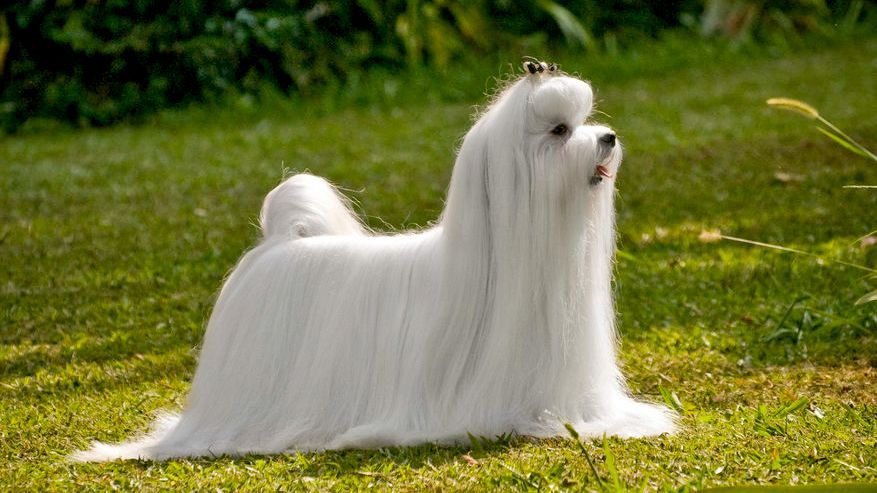
1/7
Get to know the Maltese
All you need to know about the breed
Covered from head to foot with silky, white tresses, and with an upright deportment, the Maltese has an almost regal-like bearing. This is actually quite appropriate as these tiny toy-breed dogs are considered to be one of the aristocrats of the canine world.In fact, they appear to have been positively revered in the ancient cultures of Egypt, Greece and Rome..
During Roman times, the Maltesewas also something of a status or fashion symbol, with upper-class ladies carrying them around almost like an accessory. Later, their popularity rose again in the 1800’s when they became a favourite with royalty –including several queens of England. This meant they were also a fixture at early dog shows.
Today, the Maltese is a popular choice among A-list stars. Among those reputed to have owned a Maltese are Marilyn Monroe, Jane Fonda and Elizabeth Taylor, as well as current celebrities like Ellen DeGeneres and Jessica Simpson.
Despite their small size, these plucky little animals are quite confident and not easily fazed. In fact, the Maltese can even be a bit stubborn at times, so will benefit from some early training classes. Very smart, the Maltese learns quickly. They also make good watchdogs –at least in terms of barking if not their physical demeanour. What they lack in size, they make up for in attitude.
With a fairly robust constitution, the Maltese is a healthy breed of dog with a good lifespan. Indeed, many Malteses live well into their teens –and, occasionally, even beyond.
Because of their small stature, the Malteseis not recommended for households with toddlers or small children –especially as they can also be a bit yappy at times. Also, they don’t like to be left alone for long periods of time, so are best suited to people who are at home during the day, or take them to work with you.
But, other than that, they make an excellent choice of pet dog all-round. In fact, the Maltese frequently appears in lists of the world’s most popular dog breeds.

2/7
2 facts about Malteses
1. Walk like an Egyptian
Especially admired in Ancient Egypt, it was believed that the ancestors of today’s Maltese had the ability to cure people of disease. As such, representations of Maltese-like dogs have been found on artifacts from the period. There is even a model that survives.
2. Facing up to things
A question often asked about the Maltese is how to clean the fur around their eyes. This can sometimes become stained if, for example, they have a blocked tear duct –in which case they should also see the vet. Afterwards, their fur can be cleaned using a wet cloth with warm water (and a dot of dog shampoo if you feel confident) while being careful to avoid the eyes themselves.
History of the breed
One of oldest dog breeds in the world, the Maltese has been with us for many centuries. Despite the name, however, it is believed that the ancestors of these little dogs came from Italy. The name is thought to derive from a word in one of the Semitic languages meaning ‘haven’ or ‘harbour’, as they were used to catch the rats and mice around the ports.
In Roman times, the Maltese breed went on to become popular with noblewomen. These grand ladies would carry them about their bosom or even in their pockets. Later, the breed was refined by the Chinese who crossed the dogs with their own native animals and then exported them.
By the 16th century, the popularity of the Maltese was rising in Europe where they were favoured by royalty. Both Queen Elizabeth I and Queen Victoria owned a Maltese, as did Mary, Queen of Scots.
In the 1800’s, the breed’s upward trajectory continued. Recognised by the American Kennel Club in 1888, they soon became a regular fixture at dog shows on both sides of the pond. This is still the case today, and you will spot many a Maltese strutting their stuff as they vie for ‘Best in Show’.

4/7
From head to tail
Physical characteristics of Malteses
1. Hair
Head and body covered with silky curtains of snow-white hair.
2. Head
Face distinguished by triangular ears, dark eyes and button nose.
3. Body
Sprightly in motion, small but elongated bodies have a straight topline.
4. Tail
Tail forms a single large curve ending between the hips.
5. Fur
Without the undercoat typical of many breeds, Maltese don’t shed much.

5/7
Things to look out for
From specific breed traits to a general health overview, here are some interesting facts about your Maltese
Don’t forget your toothbrush
Like many of the toy breeds of dogs, the Maltese can be prone to problems with their teeth and gums – such as gingivitis (gum inflammation) or periodontal disease (inflammation of some or all of the tooth’s support structures). As well as being painful for your Maltese, it can also result in them having difficulty eating and tooth loss, and potentially more serious complications such as kidney, liver and heart disease. Caused by a build-up of plaque and tartar on the teeth, it is best prevented with daily brushing. Also, routine cleanings/examinations with your vet are recommended.

6/7
Caring for your Maltese
Grooming, training and exercise tips
While Maltese dogs are certainly full of energy, they actually require less exercise than some other breeds because of their tiny stature. In order for them to stay healthy and happy, they should have a short daily walk or two each day, but that should suffice. This should also be supported, however, by regular play and games, as the Maltese is an intelligent breed and needs the mental stimulation. This will also help to distract them from any potential excess barking – something to which the Maltese breed can be prone.
In terms of grooming, the slinky tresses of the Maltese are their crowning glory, but their coat does require a bit of care. Gentle daily brushing is recommended, to avoid a build-up of tangles, and the hair on top of their head should be tied in a topknot or cut short to avoid irritating their eyes. A monthly bath is also a good idea. On the plus side, the Maltese doesn’t shed a great deal. Nails should be trimmed regularly, as they can be fast-growing, and ears checked too. Because the Maltese can be prone to dental disease, teeth should be brushed daily.
Despite a reputation for having something of a stubborn streak in their otherwise lovely temperament, the Maltese is a highly intelligent little dog. They are, therefore, a quick learner. Consistency, patience and positive reinforcement are key and they will soon start to progress in their training. Early socialisation can also help this tiny breed to feel comfortable in new situations and among other dogs and humans. Once they’ve got the hang of the basic commands, the Maltese can go on to do well in competitive sports, such as obedience or agility, and you will often see them scooping the coveted title of ‘Best in Show’.
7/7
All about Malteses
While either will make a wonderful pet, it’s worth noting that male Maltese dogs can exhibit classic boy behaviour, such as mounting, and will often try to escape if there is a bitch in season nearby. In addition, they will sometimes look for fights with other male dogs. But both males and females get very attached to their humans and are usually affectionate in nature.
There is no such thing as a Teacup Maltese and they are not a separate breed. They are merely smaller versions of the ordinary Maltese. Often sold by disreputable breeders, the practices used to breed these dogs can lead to a host of medical problems. So, it’s always best to stick with a conventional Maltese and buy from a responsible breeder.
Tailored nutrition for your Maltese
Read more on this topic

How your dog's nutrition needs change with age

How to adopt a dog

Things to consider before getting a dog
Sources
1 - Veterinary Centers of America https://vcahospitals.com/
2 - Royal Canin Dog Encyclopaedia. Ed 2010 and 2020
3 - Banfield Pet Hospital https://www.banfield.com/
4 - Royal Canin BHN Product Book
5 - American Kennel Club https://www.akc.org/

